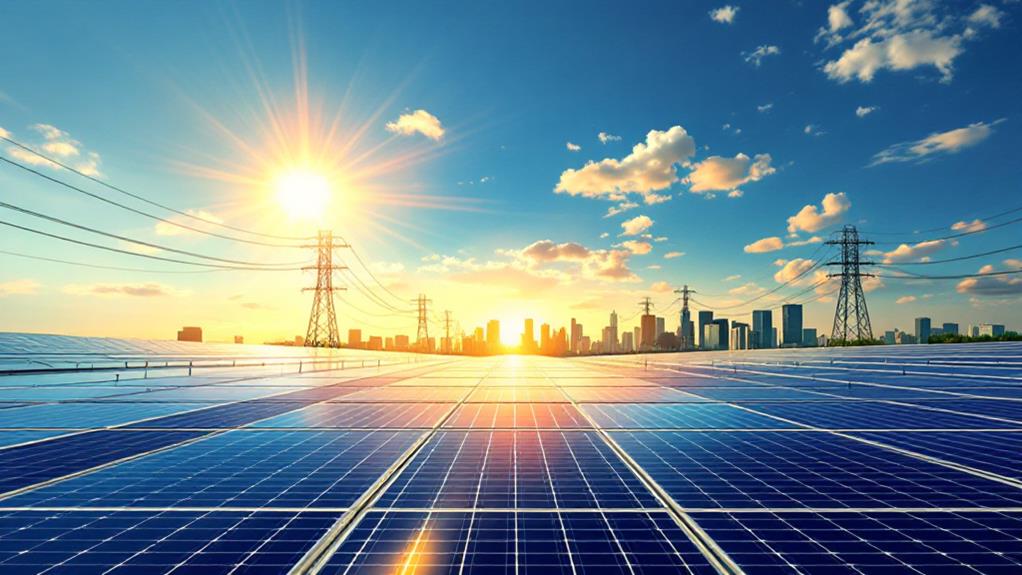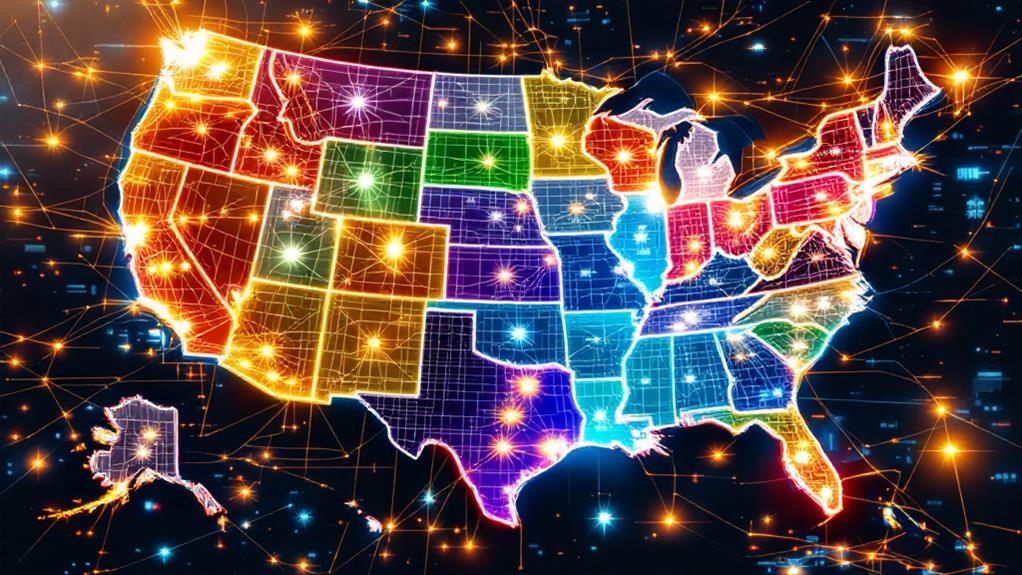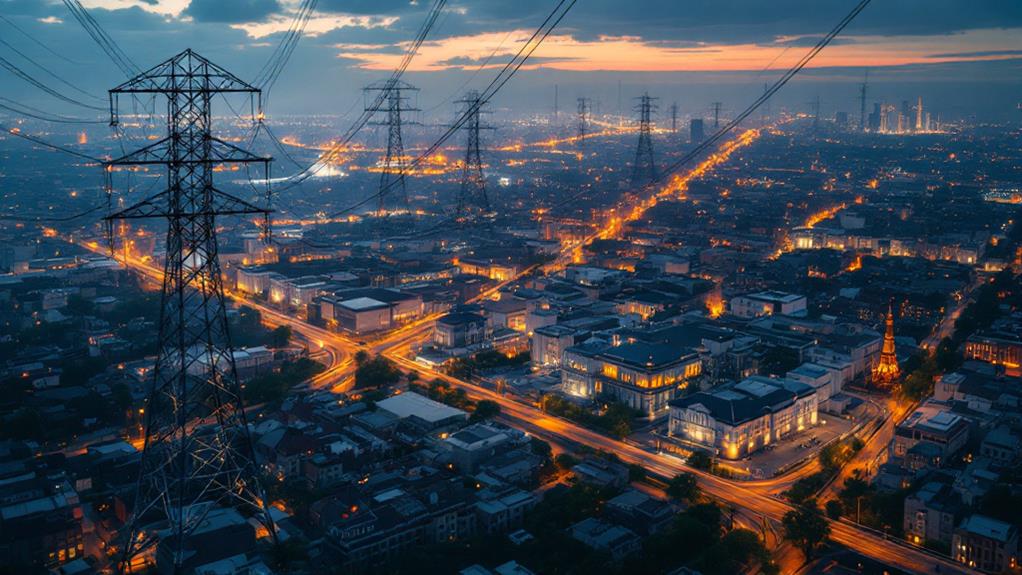The History of Power Plants: From Early Engines to Modern Energy Hubs
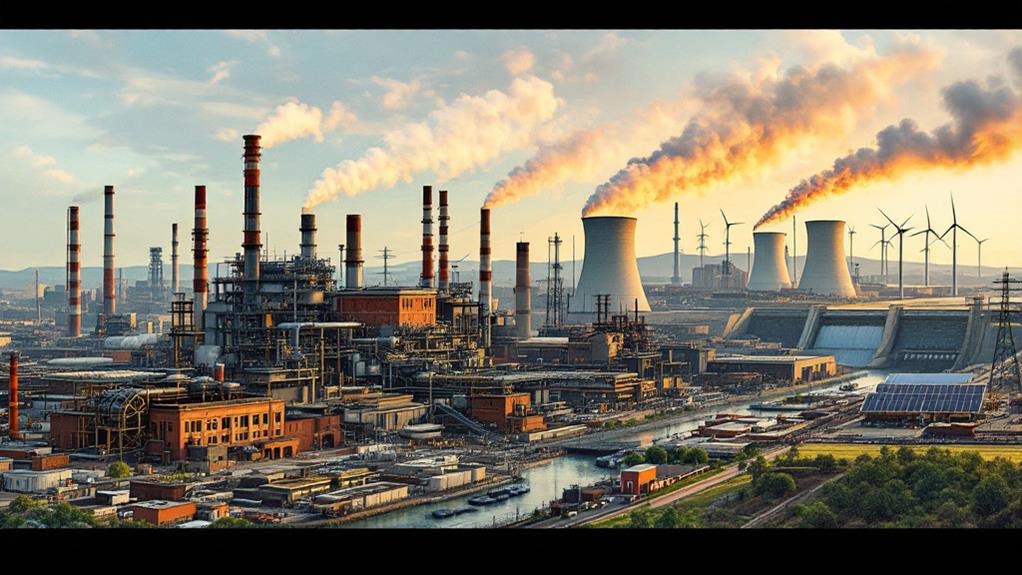
Power plants have come a long way since the early steam engines of the 18th century. You've seen their evolution from coal-fired behemoths to clean, renewable energy hubs. The expedition includes the rise of hydroelectric dams, the advent of nuclear power, and the introduction of efficient gas turbines. Today's power terrain is increasingly dominated by solar and wind farms, with smart grids optimizing distribution. As environmental concerns grow, the industry has adapted, developing cleaner technologies and exploring innovative solutions. The future of power generation promises exciting developments in fusion, advanced renewables, and AI-driven optimization. There's much more to explore about this fascinating technological odyssey.
The Dawn of Steam Power
Utilizing the power of steam marked a revolutionary turning point in human history. As you investigate the dawn of steam power, you'll uncover how this innovation transformed industries and paved the way for modern power plants.
The concept of harnessing steam's energy dates back to ancient times, but it wasn't until the 18th century that practical applications emerged. You'll find that early steam engines, like those developed by Thomas Newcomen and James Watt, initially focused on pumping water from mines. These engines laid the foundation for future advancements in boiler efficiency and steam turbine design.
As you explore deeper, you'll see how improvements in materials and engineering led to more powerful and efficient steam engines. The introduction of high-pressure steam boilers in the 19th century significantly boosted power output. This progress culminated in the development of steam turbines, which revolutionized electricity generation.
You'll notice that steam power's impact extended beyond industry, influencing transportation with the advent of steam locomotives and ships. These developments set the stage for the centralized power plants that would soon emerge, forever altering the energy landscape.
Coal-Fired Revolution
As steam power gained momentum, coal emerged as the fuel of choice for this burgeoning technology. You'd find that coal's high energy density and widespread availability made it ideal for powering steam engines. The Industrial Revolution saw a massive surge in coal consumption, with factories and railroads relying heavily on this fossil fuel.
Coal-fired power plants soon became the backbone of electricity generation. These plants used the heat from coal combustion to boil water, creating steam that drove turbines connected to generators. You'd notice that this process was far more efficient than earlier steam engines, allowing for the production of electricity on a much larger scale.
However, the coal-fired revolution wasn't without its drawbacks. Coal combustion emissions became a significant environmental concern, releasing pollutants like sulfur dioxide and carbon dioxide into the atmosphere. As you look at the history of power generation, you'll see that these emissions have contributed to air pollution and climate change. Additionally, the rapid exploitation of coal reserves has led to concerns about coal reserves depletion, prompting a search for alternative energy sources in recent decades.
Hydroelectric Power Emerges
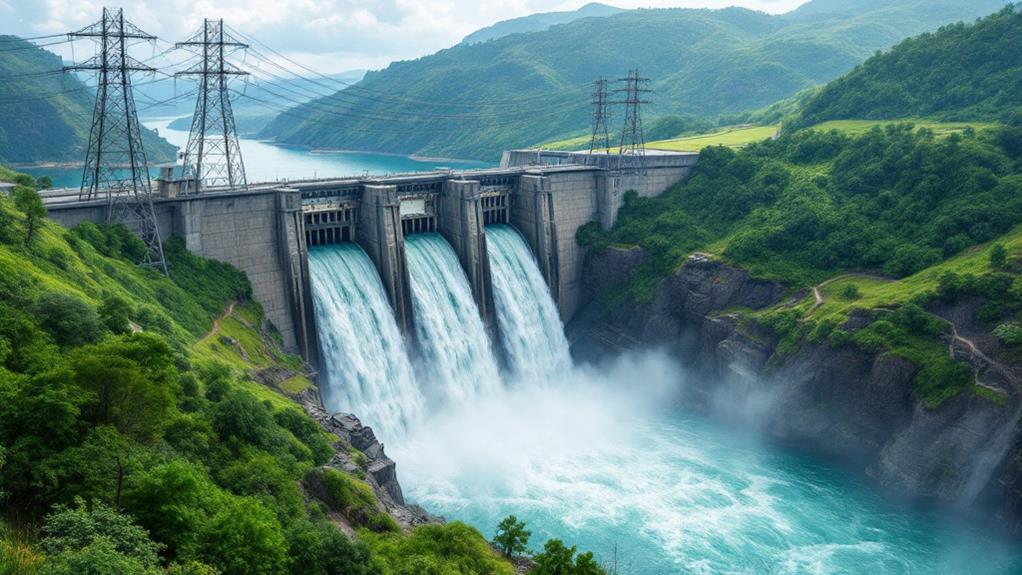
Channeling the power of flowing water, hydroelectric generation emerged as a promising alternative to coal-fired plants in the late 19th century. You'd find that utilizing river flows became a focal point for engineers and industrialists seeking cleaner, renewable energy sources. The concept wasn't new—water wheels had been powering mills for centuries—but the scale and efficiency of hydroelectric power plants were revolutionary.
Hydroelectric dam construction began in earnest, with the first major facility opening in 1882 at Appleton, Wisconsin. These dams altered landscapes and economies, providing not just electricity but also:
- Flood control
- Irrigation for agriculture
- Recreational opportunities on reservoirs
You'll notice that as technology advanced, so did the size and complexity of hydroelectric projects. The Hoover Dam, completed in 1936, showcased the potential of large-scale hydropower. It not only generated massive amounts of electricity but also became a symbol of human ingenuity and progress.
Nuclear Energy's Debut
The atomic age ushered in a revolutionary phase of power generation. As you investigate the history of nuclear energy, you'll find its roots in the 1940s, with the first controlled nuclear chain reaction achieved in 1942. By the 1950s, scientists and engineers were working tirelessly to harness this immense power for electricity production.
The world's first commercial nuclear power plant opened in 1956 in Calder Hall, England. This milestone marked the beginning of a transformative phase in energy production. You'll notice that nuclear power quickly gained popularity due to its high energy output and low carbon emissions. However, it also brought new challenges, particularly in nuclear waste management and radioactive containment.
As nuclear technology advanced, so did safety measures and regulations. You'll see how the industry developed sophisticated systems for handling radioactive materials and managing nuclear waste. Despite these improvements, public concern over nuclear safety grew, especially after incidents like Three Mile Island and Chernobyl. Today, nuclear energy remains a controversial yet significant part of the global energy mix, with ongoing debates about its future role in power generation.
Gas Turbines and Combined Cycle

Gas turbines burst onto the power generation scene in the mid-20th century, revolutionizing the industry. You'll find these efficient machines in power plants worldwide, utilizing the Brayton cycle to generate electricity. They've become increasingly popular due to their compact size, quick start-up times, and flexibility in fuel usage.
Combined cycle power plants take gas turbine technology a step further. They capture waste heat from the gas turbine's exhaust to generate additional electricity through a steam turbine. This innovative approach tremendously enhances overall efficiency, sometimes reaching up to 60%.
Gas turbines and combined cycle systems offer several advantages:
- High power output relative to size
- Lower emissions compared to coal-fired plants
- Ability to respond quickly to fluctuating power demands
In recent years, you've likely encountered cogeneration systems and microturbine applications. Cogeneration, or combined heat and power (CHP), uses gas turbines to produce both electricity and useful heat for industrial processes or district heating. Microturbines, smaller versions of gas turbines, are finding their place in distributed energy systems, providing power for small businesses, remote locations, and even some residential applications.
Rise of Renewable Energy
Renewable energy's rise in recent decades has altered the power generation milieu. You've witnessed a dramatic shift in how electricity is produced, with solar and wind power leading the charge. Solar adoption has skyrocketed, thanks to plummeting costs and improved efficiency. You'll find photovoltaic panels adorning rooftops and sprawling across vast solar farms, capturing the sun's energy like never before.
Wind power expansion has been equally impressive. You've likely seen towering turbines dotting landscapes and offshore installations embracing powerful ocean breezes. These giants convert kinetic energy into electricity, providing a clean alternative to fossil fuels.
But renewables don't stop there. You're seeing increased interest in geothermal, biomass, and hydroelectric power. Each offers unique advantages in specific regions, diversifying the energy mix. As storage technologies advance, you're experiencing more stable and reliable renewable energy systems.
This shift isn't just about environmental concerns; it's reshaping economies and creating new job sectors. You're living through a critical moment in power generation history, where renewable energy is rapidly becoming the norm rather than the exception.
Smart Grids and Distribution
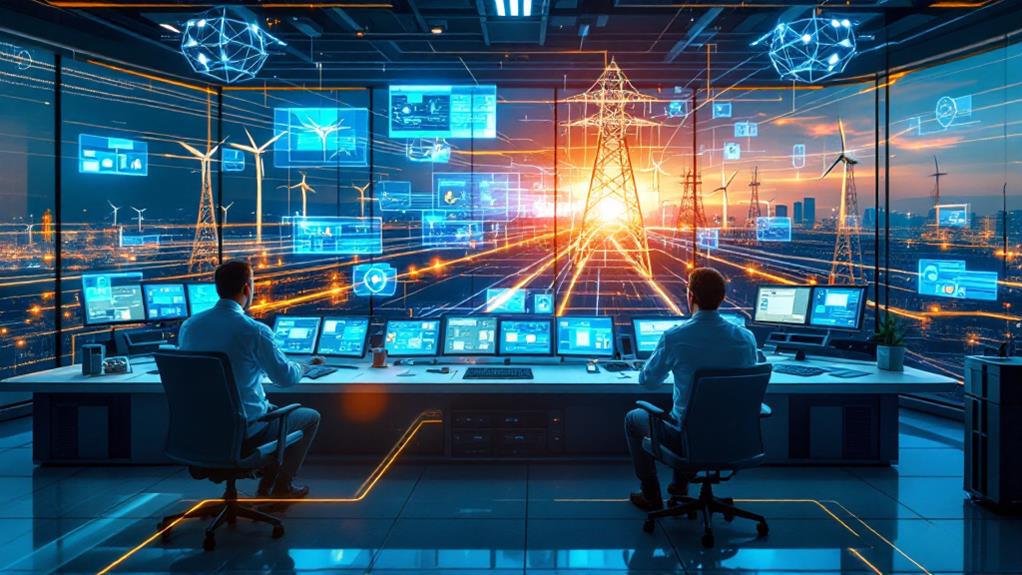
As we move into the coming age, you're witnessing a revolution in power distribution through smart grids. These intelligent networks use digital technology to monitor and manage electricity flow, optimizing efficiency and reliability. Smart grids enable two-way communication between utilities and consumers, allowing for real-time adjustments to meet demand.
One of the key features of smart grids is their ability to integrate renewable energy sources seamlessly. This includes:
- Microgrid integration
- Distributed generation
- Energy storage systems
You'll find that smart grids can isolate problems and reroute power to prevent widespread outages. They also support the growing trend of prosumers – consumers who produce their own energy through solar panels or wind turbines and sell excess power back to the grid.
As you welcome this changing landscape of power distribution, you'll notice improved energy efficiency and reduced costs. Smart meters in your home provide detailed information about your energy consumption, giving you the power to make informed decisions. With the ability to accommodate electric vehicles and other emerging technologies, smart grids are carving the path for a more sustainable and resilient energy future.
Environmental Challenges and Solutions
Environmental challenges have plagued power plants since their inception, but you'll find that solutions are emerging at an extraordinary pace. You're witnessing a shift towards carbon footprint reduction as power plants adopt cleaner technologies. Scrubbers and filters now capture pollutants before they enter the atmosphere, while advanced combustion techniques minimize harmful emissions.
You'll notice that sustainable energy practices are becoming increasingly prevalent. Many power plants are transitioning to renewable sources like solar, wind, and hydroelectric power. These alternatives significantly reduce greenhouse gas emissions and dependence on finite fossil fuels.
Carbon capture and storage technologies are also gaining traction. You'll see power plants implementing systems that trap CO2 emissions and store them underground, preventing their release into the atmosphere.
Moreover, you're likely to encounter more efficient plant designs that maximize energy output while minimizing waste. Combined-cycle plants, for instance, use both gas and steam turbines to generate electricity, increasing overall efficiency.
As you investigate the shifting landscape of power generation, you'll uncover that the industry is continuously innovating to address environmental concerns while meeting growing energy demands.
Future of Power Generation
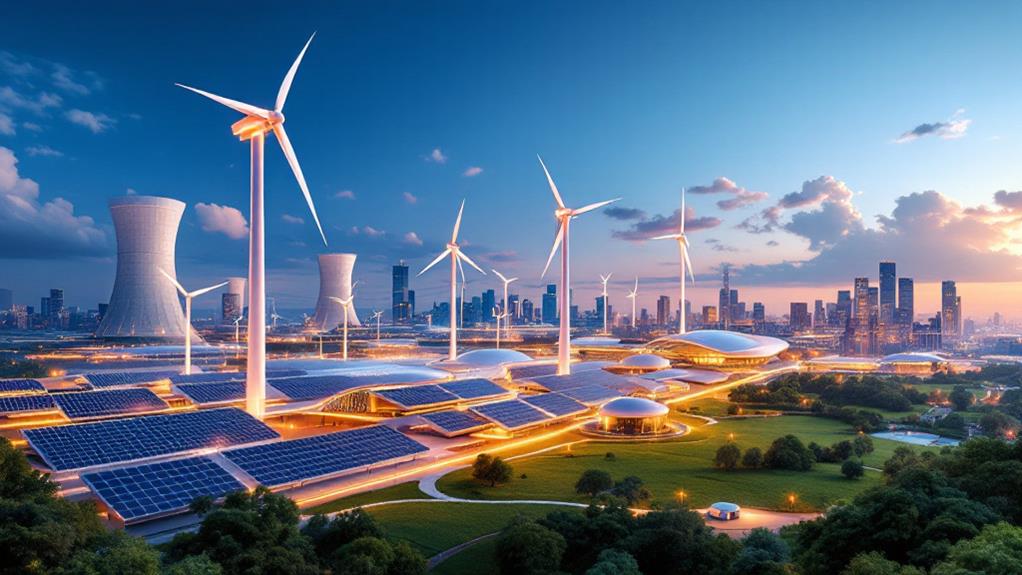
Looking ahead, you'll find that the future of power generation is characterized by rapid technological advancements and a shift towards decentralization. You'll witness a growing emphasis on distributed generation, where power is produced closer to where it's consumed. This approach reduces transmission losses and enhances grid resilience.
Microgrid integration will play a vital role in this transformation. You'll see more communities and businesses adopting self-sufficient energy systems that can operate independently or in conjunction with the main grid. These microgrids will incorporate:
- Renewable energy sources like solar and wind
- Advanced energy storage solutions
- Smart load management systems
As you move forward, you'll notice a continued push towards cleaner energy sources. Innovations in nuclear fusion, advanced solar technologies, and offshore wind farms will reshape the energy environment. You'll also see increased adoption of artificial intelligence and machine learning to optimize power generation and distribution.
The future power grid will be more flexible, responsive, and interconnected. You'll experience a shift from passive consumers to active "prosumers," participating in energy markets through smart home systems and electric vehicles.
